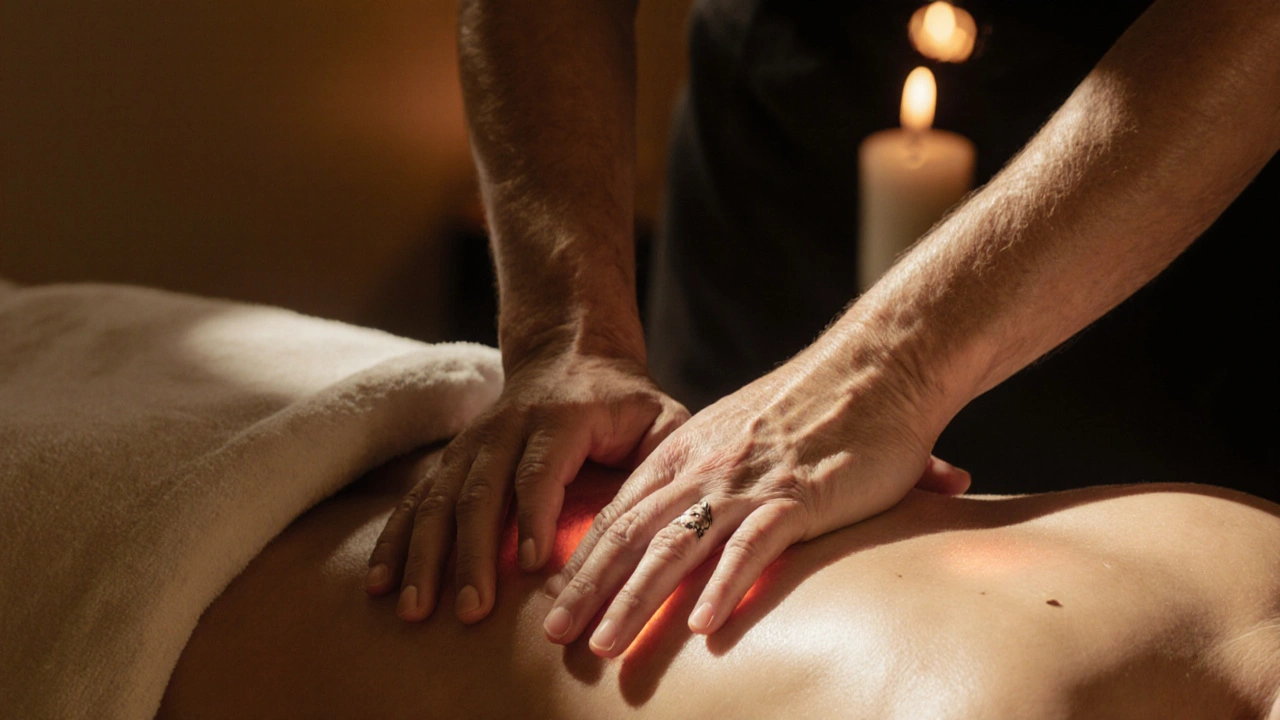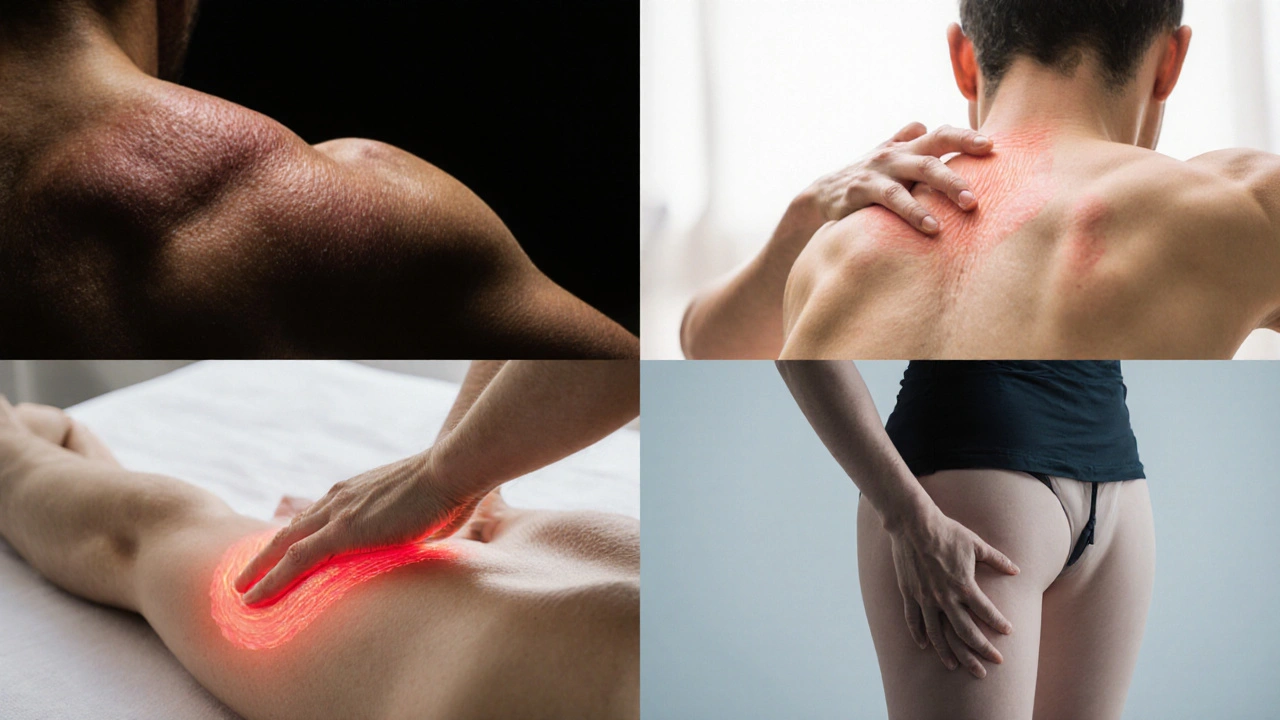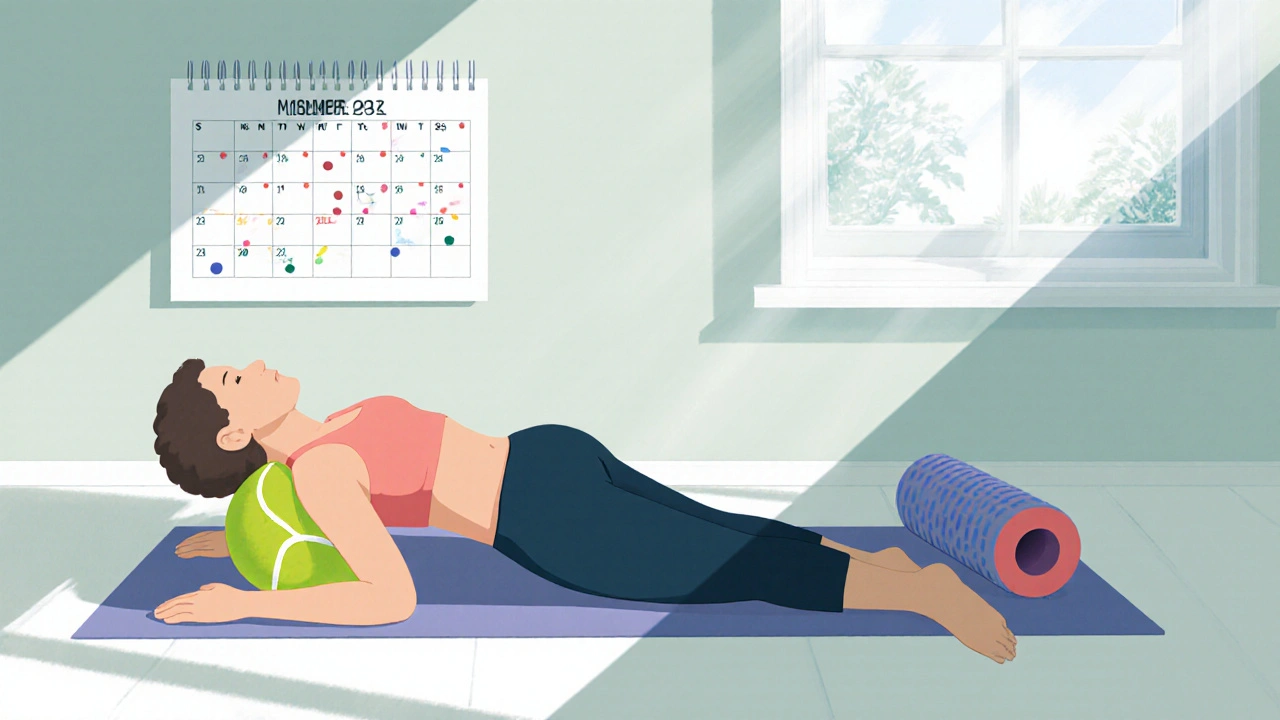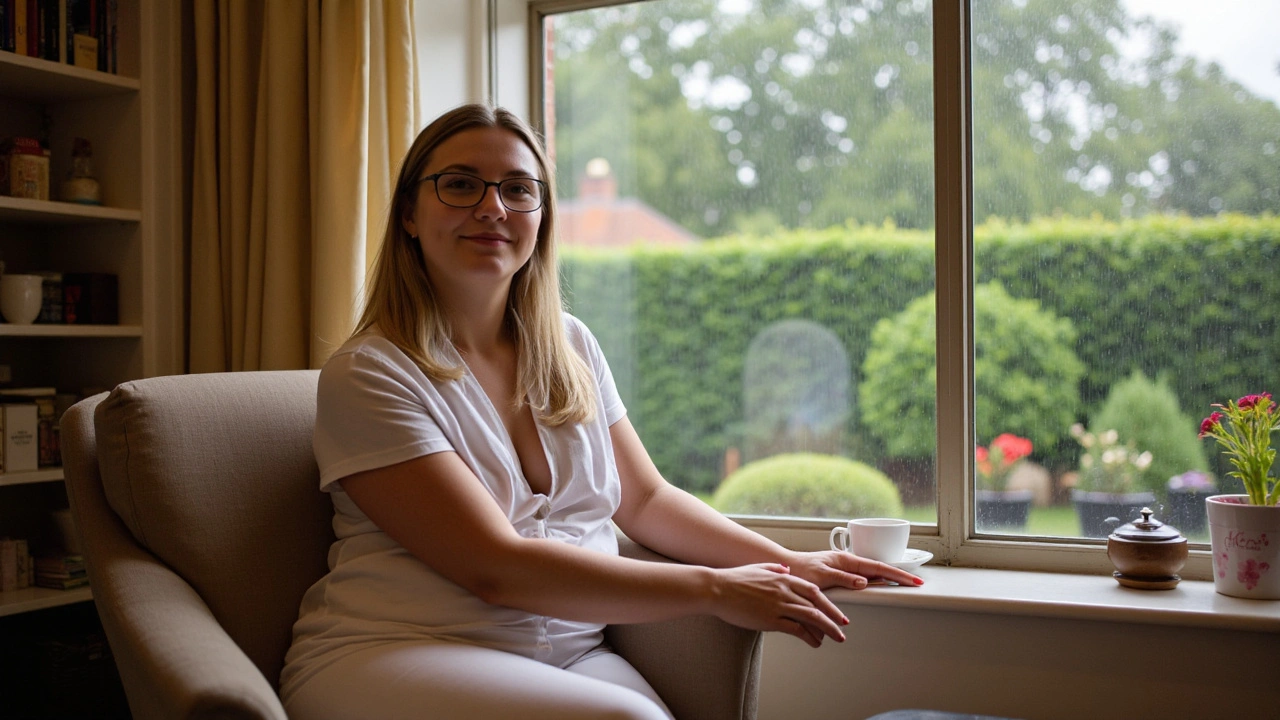Body Massage for Chronic Pain: Natural Relief Strategies

When you hear Body Massage is a hands‑on therapy that manipulates muscles, fascia and circulation to promote healing and relaxation, you might picture a spa day. But for the 20% of adults in the UK living with chronic pain, regular body massage can be a daily‑to‑weekly tool that eases stubborn aches without pills.
Why Body Massage Helps Chronic Pain
Chronic pain isn’t just a nuisance; it’s a complex physiological response involving nerve signaling, inflammation and muscle tension. Massage works on three fronts:
- Mechanical relief: Pressure breaks down adhesions and releases trigger points, allowing muscle fibers to slide more freely.
- Neurochemical boost: Gentle strokes stimulate the release of endorphins and serotonin, which act as natural painkillers.
- Circulatory improvement: Increased blood flow brings oxygen and nutrients to damaged tissue while flushing out metabolic waste.
Research from the University of Manchester (2023) showed a 30% reduction in reported pain scores after six weekly sessions of deep tissue massage for fibromyalgia patients.
Massage Types That Target Chronic Pain
Not every massage feels the same. Below is a quick guide to the most evidence‑backed styles for long‑term discomfort.
| Style | Pressure level | Best for | Typical session length |
|---|---|---|---|
| Deep Tissue Massage | Firm, slow strokes | Stiff muscles, trigger points | 60-90min |
| Swedish Massage | Light to medium | General relaxation, circulation | 45-60min |
| Trigger Point Therapy | Targeted, high pressure | Localized knots, radiating pain | 30-45min |
| Myofascial Release | Gentle, sustained stretch | Fascial adhesions, limited ROM | 60min |
If you’re unsure which style suits you, start with a consultation. Many therapists will blend techniques based on your pain pattern.
How to Choose a Qualified Therapist
Professional competence matters more than the décor of the treatment room. Look for these credentials:
- Registration with the United Kingdom Council for Massage Therapy (UKCMT) or the Complementary and Natural Healthcare Council (CNHC).
- Special training in pain‑focused modalities such as deep tissue or trigger point therapy.
- Clear hygiene policies and a private space for undressing.
- Positive reviews that mention pain reduction, not just “relaxation”.
Ask about their approach to chronic conditions. A therapist who asks about medication, activity level and medical history is likely to tailor pressure and avoid aggravating flare‑ups.

Self‑Massage Techniques You Can Do at Home
Professional sessions are ideal, but you can reinforce benefits with simple daily stretches and self‑massage. Here are three go‑to moves that require only a tennis ball or a foam roller.
- Upper back release: Lie on your back, place a tennis ball between the shoulder blade and spine, and roll gently for 2minutes each side.
- Quadriceps foam roll: Sit on the floor, place the roller under the front of your thighs, and roll from hip to knee for 3minutes.
- Calf kneading: Use both hands to press into the calf muscles, hold for 10seconds, then release. Repeat 10 times per leg.
Consistency beats intensity. Ten minutes a day can keep muscles supple, lower tension‑related pain and improve circulation.
Safety Tips and Contraindications
Massage feels safe, but certain health issues require caution:
- Blood clotting disorders (e.g., deep vein thrombosis) - avoid deep pressure on affected limbs.
- Acute infections or fever - massage can spread pathogens.
- Recent surgeries - wait until the surgeon clears you, usually 4-6weeks.
- Pregnancy - choose prenatal‑trained therapists and stay away from the abdomen.
If you notice increased pain, bruising or dizziness, stop immediately and discuss the reaction with your practitioner.

Tracking Progress and Setting Realistic Goals
Massage isn’t a magic fix; it’s a component of a broader pain‑management plan that may also include physiotherapy, gentle exercise and nutrition. Use a simple log:
- Date and type of massage.
- Pain rating before (0‑10) and after the session.
- Any functional changes - e.g., “able to walk an extra block”.
- Notes on mood or sleep quality.
After four weeks, review trends. A steady drop of 1‑2 points on the pain scale signals that the regimen is working.
Putting It All Together: A Sample Weekly Plan
Here’s a realistic schedule for someone with lower‑back chronic pain:
- Monday: 60‑minute deep tissue session focused on lumbar and gluteal muscles.
- Tuesday: 10‑minute self‑massage (foam roll) + 15‑minute gentle stretch routine.
- Wednesday: Rest or light walking.
- Thursday: 45‑minute Swedish massage for circulation.
- Friday: 10‑minute upper‑back tennis‑ball release.
- Weekend: Optional aromatherapy massage for relaxation (if stress‑related flare‑ups).
Adjust frequency based on budget and response. Even two professional sessions per month can keep pain scores low when paired with daily self‑care.
Frequently Asked Questions
Can body massage replace medication for chronic pain?
Massage is a complementary tool, not a wholesale replacement. It can lower the required dose of painkillers for many people, but you should always discuss changes with your GP.
How often should I get a professional massage?
For chronic pain, once a week for the first month then taper to bi‑weekly or monthly works for most clients. Frequency depends on pain severity, budget and therapist advice.
Is deep tissue massage painful?
Expect a firm pressure that can feel uncomfortable when a knot is being released, but it should never be sharp or cause lasting soreness. Communicate with your therapist to stay within tolerable limits.
Can I get a massage if I have arthritis?
Yes. Gentle Swedish or myofascial release can improve joint mobility and reduce stiffness. Avoid aggressive deep tissue on inflamed joints unless a rheumatologist approves.
What should I do after a painful massage session?
Hydrate plenty of water, apply a warm compress to any sore spots, and move gently for the next hour. Light stretching helps the tissues settle.




Rahul Ghadia
October 12, 2025 AT 23:50Oh, sure-because splurging on weekly deep‑tissue sessions is the golden ticket to “pain‑free” living!!!, right???, maybe next we’ll all replace medication with scented candles!!!
lindsay chipman
October 14, 2025 AT 18:01From a neurophysiological standpoint, the analgesic cascade triggered by mechanotransduction is mediated via endogenous opioid peptides and serotonergic pathways; failing to recognize this biochemical substrate renders the layperson’s anecdotal enthusiasm moot. Moreover, the dose‑response relationship of pressure intensity versus nociceptor desensitization follows a sigmoidal curve, emphasizing that indiscriminate “more pressure” is not a panacea. Clinical protocols therefore advocate calibrated force application, calibrated duration, and periodic reassessment to optimize therapeutic efficacy.
Roberto Lopez
October 16, 2025 AT 12:11I roll a tennis ball on my back daily and swear it makes the ache disappear.
Gopal Ram
October 18, 2025 AT 06:21First off, i gotta say that self‑massage is basically the unsung hero of chronic pain regimes-no frills, no appointment, just you and a little rubber ball. The simplicity of it belies the profound impact on my morning stiffness, which used to feel like a steel band around my spine. By positioning the tennis ball between my shoulder blade and vertebrae i can target those nasty trigger points that keep me up at night. I hold each spot for about two minutes, breathing slowly, and i notice a gradual release of tension, almost like a slow‑cooked stew of stress unwinding.
Secondly, the foam roll on the quads isn’t just a gimmick; it actually promotes myofascial pliability, allowing better blood flow and metabolites clearance. I slide the roller from hip to knee for three minutes, and later my legs feel lighter, as if the weight of a hundred‑year‑old suitcase has been lifted.
Thirdly, i never skip the calf kneading; the repetitive 10‑second press‑hold‑release pattern stimulates mechanoreceptors that send calming signals up the spinal cord. Repeating this ten times per leg is a ritual that grounds me, especially after a long day at the desk.
In addition, i keep a small journal-just a dot on my phone-recording pain scores before and after each self‑session; the data shows a consistent 1‑2 point drop on the 0‑10 scale. This feedback loop is crucial, because without objective metrics you might convince yourself you’re improving when you’re not.
Also, stay hydrated! Water flushes out the metabolic waste that accumulates after deep tissue pressure, preventing post‑massage soreness. I drink at least a litre of warm water within an hour of finishing.
Don’t forget to stretch gently after each session; a few dynamic movements keep the newly relaxed tissues from recoiling into old patterns. A simple cat‑cow stretch or a hip hinge does the trick.
Lastly, listen to your body. If something feels sharp or you notice bruising, back off and maybe consult a professional-self‑care is a complement, not a replacement. 👍💪
Mitchel Geisel
October 20, 2025 AT 00:31Wow, because nothing screams “professional health advice” quite like a twenty‑minute rant about roller‑balls and “feel‑good” vibes-sure, that’ll cure everything from arthritis to existential dread.
Praveen Lingareddy
October 21, 2025 AT 18:42Listen, the very notion that a simple foam roller could resurrect a weary back is pure melodrama; yet, I shall concede that when applied with surgical precision-meticulously calibrated to the patient’s biomechanical profile-it can indeed orchestrate a symphony of relief, provided the practitioner respects the sanctity of tissue integrity and does not indulge in reckless brute force.
Emily S Hurricane
October 23, 2025 AT 12:52For anyone starting out, begin with a tennis‑ball upper‑back release for two minutes per side, then progress to a 5‑minute quad foam‑roll; track your pain scores daily and adjust pressure based on comfort, aiming for a consistent 1‑point reduction each week.
ian haugh
October 25, 2025 AT 07:02Hey folks, just wanted to share that I’ve found the 10‑minute nightly calf knead paired with a quick stretch routine makes my legs feel less like jelly and more ready for the morning jog-give it a whirl and see how it fits into your routine.